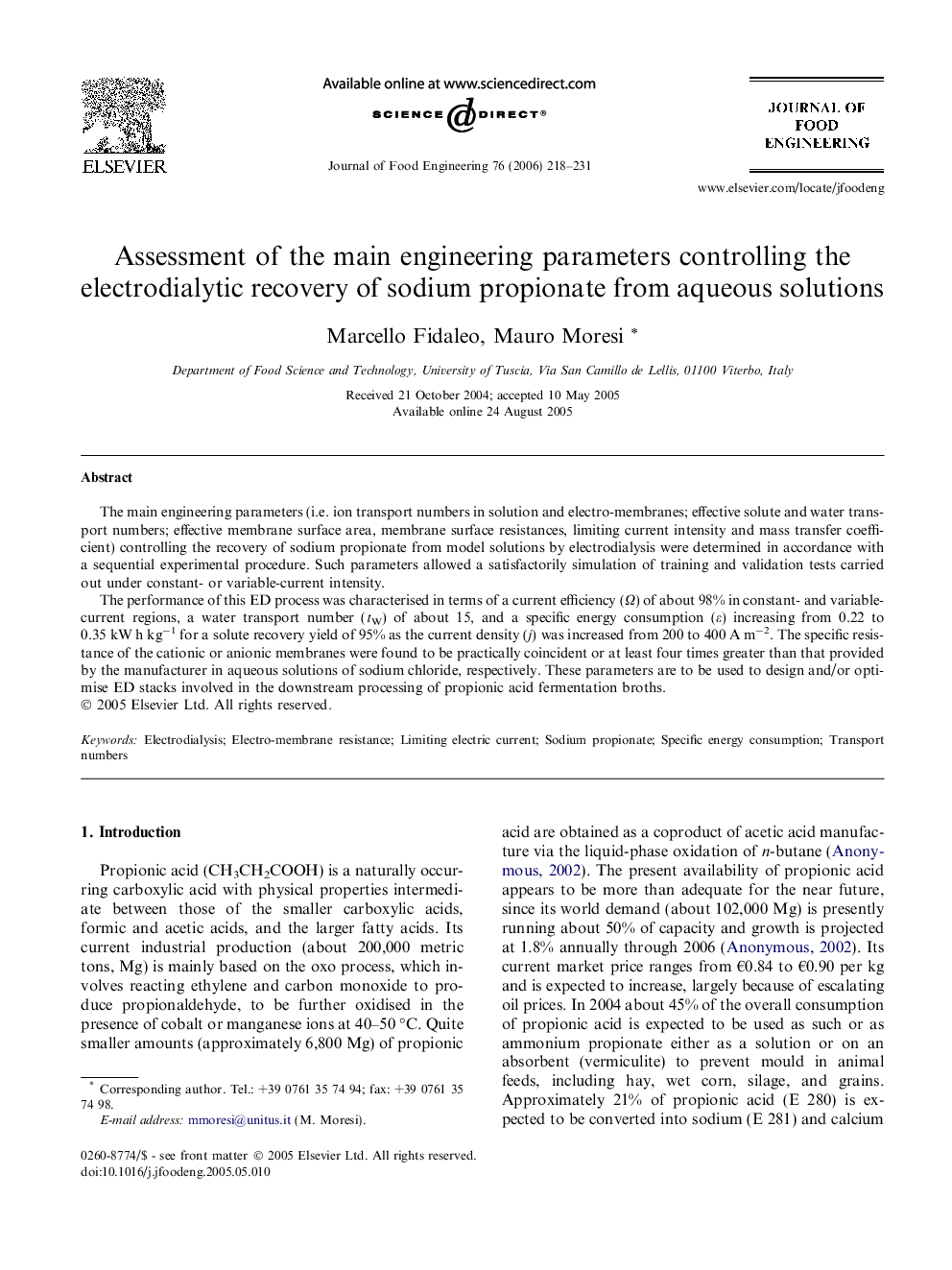| Article ID | Journal | Published Year | Pages | File Type |
|---|---|---|---|---|
| 226370 | Journal of Food Engineering | 2006 | 14 Pages |
The main engineering parameters (i.e. ion transport numbers in solution and electro-membranes; effective solute and water transport numbers; effective membrane surface area, membrane surface resistances, limiting current intensity and mass transfer coefficient) controlling the recovery of sodium propionate from model solutions by electrodialysis were determined in accordance with a sequential experimental procedure. Such parameters allowed a satisfactorily simulation of training and validation tests carried out under constant- or variable-current intensity.The performance of this ED process was characterised in terms of a current efficiency (Ω) of about 98% in constant- and variable-current regions, a water transport number (tW) of about 15, and a specific energy consumption (ε) increasing from 0.22 to 0.35 kW h kg−1 for a solute recovery yield of 95% as the current density (j) was increased from 200 to 400 A m−2. The specific resistance of the cationic or anionic membranes were found to be practically coincident or at least four times greater than that provided by the manufacturer in aqueous solutions of sodium chloride, respectively. These parameters are to be used to design and/or optimise ED stacks involved in the downstream processing of propionic acid fermentation broths.
